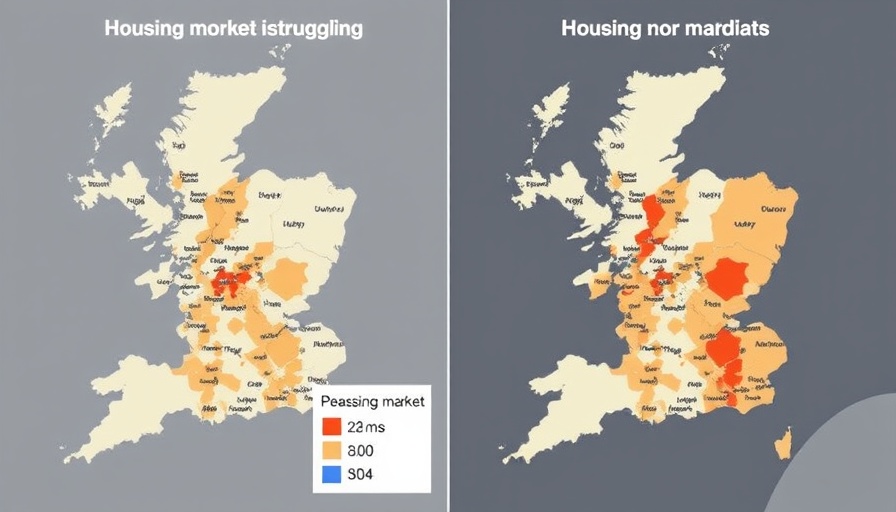
Mapping the Housing Market's Discontent
As we dive deeper into the era of fluctuating housing markets, a recent report from John Burns Research & Consulting (JBREC) sheds light on significant regional differences across the United States. While optimism filled the air at the start of 2025, recent developments have left many in the real estate sector feeling uncertain. Two maps from their midyear housing market report highlight crucial areas where the housing market is struggling, namely Texas and Florida, compared to unexpectedly strong conditions in the Midwest.
The Current State of Housing in Texas and Florida
Historically, Texas and Florida have been major draws for homebuyers and builders alike, boasting rapid growth and flourishing economies. However, data from JBREC indicates a stark shift in these markets. Reports show that every market assessed in these states is now described as 'slow.' A survey conducted by JBREC reveals that rising property taxes and homeowners insurance costs are pushing many to consider selling, with 30% of Texas homeowners and 26% of those in northern Florida citing financial burdens as motivators to sell. This situation reflects broader national trends, where an average of 23% of homeowners are doing the same.
Bright Spots in the Midwest
While certain regions falter, the Midwest emerges with renewed stability. Both Chicago and Indianapolis are reported as 'strong' markets, contrary to expectations for year-on-year downgrades. These areas present unique opportunities for builders and investors willing to reallocate focus away from the traditional hotspots of the Sun Belt states.
Implications for Builders and Investors
For real estate professionals and potential investors, the slowdowns in previously robust markets necessitate a reaction. As a period traditionally characterized by sales booms arrives each spring, the downgrading from normal to slow indicates that builders may need to consider market saturation and tailor their strategies accordingly. With segments like Colorado, North Carolina, and Nashville also categorized as 'slow,' the emphasis on Midwest regions for potential growth opportunities seems both timely and strategic.
What’s Next for the Housing Market?
As we look ahead, the outlook remains cautious. With continued discussions regarding housing affordability and economic factors influencing homebuyers, it's crucial for stakeholders within the real estate industry to stay informed of ongoing trends. The emphasis now shifts to innovation, with builders encouraged to explore alternative markets and adapt to an evolving landscape.
Making Informed Decisions in a Shifting Market
The current landscape signifies a call to action for homeowners contemplating selling their properties as well. Understanding local market conditions can provide clarity and guide timely decisions. The housing market may be experiencing challenges, but opportunities to pivot remain available for those willing to adapt.
The insights gathered from JBREC's analysis not only highlight where challenges lie but also where prospects may flourish. By staying proactive and informed, builders, investors, and homeowners can navigate this complex environment effectively.
 Add Row
Add Row  Add
Add 




Write A Comment